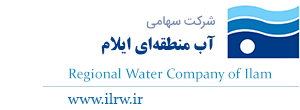Groundwater modeling of Khash aquifer and predicting effect of artificial-recharge project on the groundwater level
Surface water deficiency redounded to using the groundwater resources in the arid and semiarid regions of the state in order to providing ever-increasing requirements because of social-economic development programs have led to overuse and negative budget of groundwater resources. Therefore, the only way to regulate it is to use managerial methods for proper use of water resources while taking into account permanent development. Intelligent management of these resources requires exact identification of groundwater fluctuations and determination of its behavior as result of changes affected on them in the future. Using novel modeling methods and integrating them led to results that are more exact and consume less time. Continuous level downfall led to negative budget in Gouharkouh plain aquifer (Khash, Sistan & Baluchistan, Iran) and based on conducted researches the aquifer is confront with 12.4 MCM annual shortage and about 57 cm Annual water level downfall in past 5 years. In this study, GMS (Groundwater Modeling System) and integrated data layers in GIS (Geographic Information System) have been used for plain modeling in the steady and unsteady states. Finally using calibrated model, effect of an artificial-recharge project on eastern part of the Gouharkouh aquifer has been surveyed and amount of rise in groundwater level during 1 year has been predicted. According to the modeling results, artificial-recharge project will lead to groundwater level rise about 1.7 m around the areas near the implementation of the project.
گروه: آب های زیرزمینی








